Delaware (1/3)
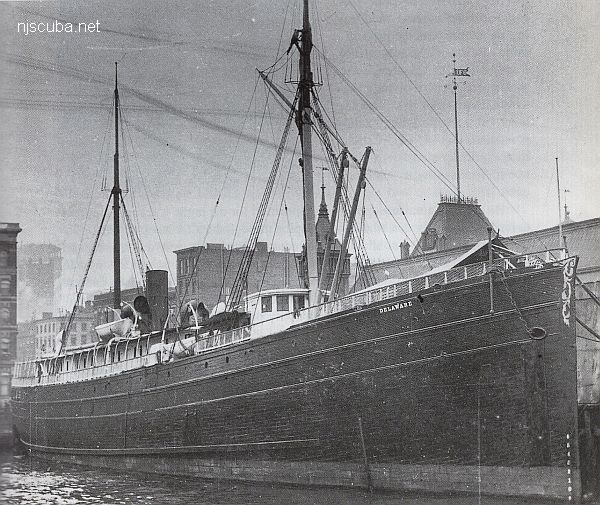
- Type:
- shipwreck, steamer, USA, Clyde Lines ( see Mohawk )
- Built:
- 1880, Hillman Ship & Engine Building, Philadelphia PA USA
- Specs:
- ( 250 x 37 ft ) 1646 gross tons, 66 passengers & crew
- Sunk:
- Saturday July 9, 1898
fire below decks, burned to waterline - no casualties - Depth:
- 75 ft

There is actually quite a bit of this old wooden steamer left. A linear array of rather large but low pieces is clearly recognizable as the remains of a ship, beginning with the bow and anchor assembly, back through the boilers, engine, drive shaft, and propeller, with hull ribs, copper sheathing, and other wooden remains throughout.
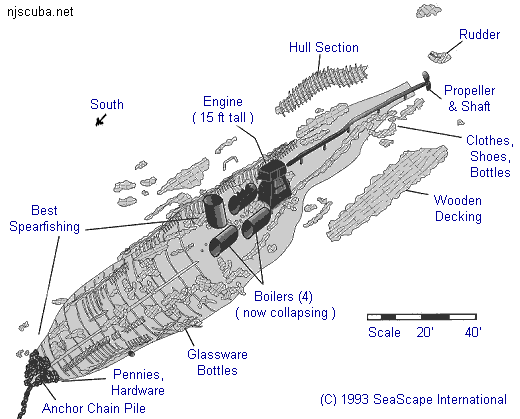
Depending on how the sand shifts, you may find a long chain extending from the bow, ending in a rusted clump, but no anchor. This is perplexing, since a large mass of chain and ( until recently ) the ship's anchor and are still evident on the bow structure. The explanation is this:
The morning after the fire, the burned-out hulk was found and taken in tow by salvagers. It promptly sank, at which point the salvagers would have had no choice but to let loose their end of the tow chain. As the extra chain rattled overboard, it would have sank and formed a pile at the end of the tow.
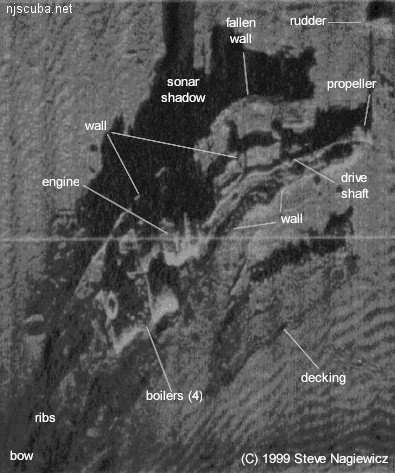
Conditions tend to be murky and dark ( bring a good light ), and there is usually a moderate current present. Several large sections of decking lie off the main axis of the wreck, and if you unknowingly stray onto them you can find yourself lost. Otherwise, navigation is not difficult, as the main wreckage is fairly straight and contiguous.
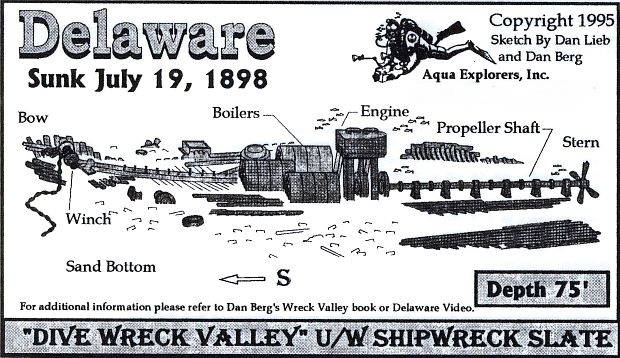
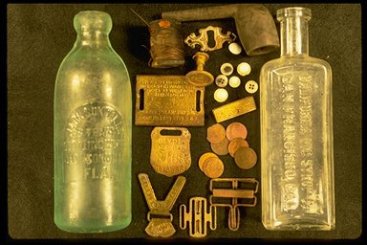
Jacksonville Steam Bottling Works (left) - the most often-found bottle on the wreck. Other cargoes include 'dry goods' like pipes, suspender clips in several different styles, and buttons. The square bottle at right is California Fig Syrup.
Lobsters disappear very quickly from this often-visited wreck, but there are still a few good ones, strategically located out of reach. The Delaware is usually crawling with big crabs, Sea Bass and Blackfish. The alley between the boilers is especially productive for spearfishing. Oddly, the last time I was on it, I could not find one single sea anemone, although the wreck is fairly well covered with white coral.
Small brass artifacts, primarily hull spikes, are still recovered, but the easy ones are long gone, so bring a hammer and chisel. Capt Steve adds: "You can still find pennies, brass suspender clips, bullets, and assorted smallish trinkets in her bow sections, with a lot of patience and fanning the sands. In her stern, you can still find Jacksonville Steam Bottling Works soda bottles, olive jars, and lineament bottles, and even a case or two of old leather shoes; not for the fashion-minded however." the best digging is between the chain pile and the boilers.
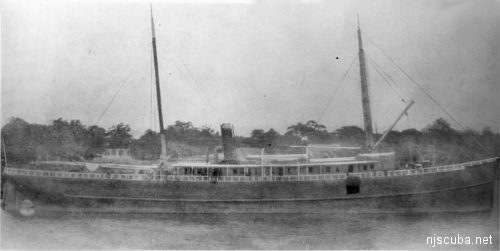
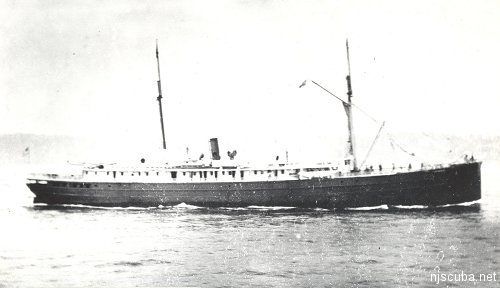
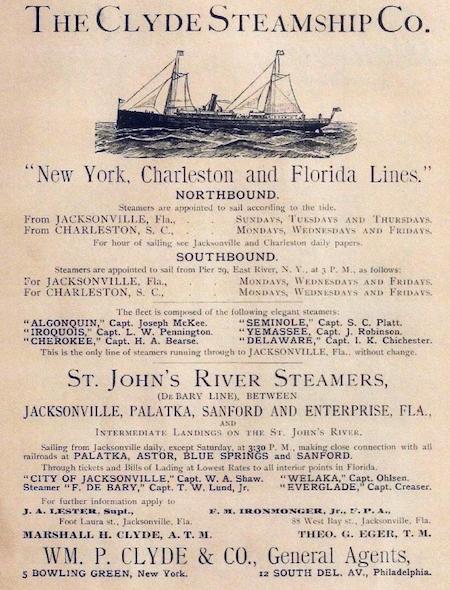

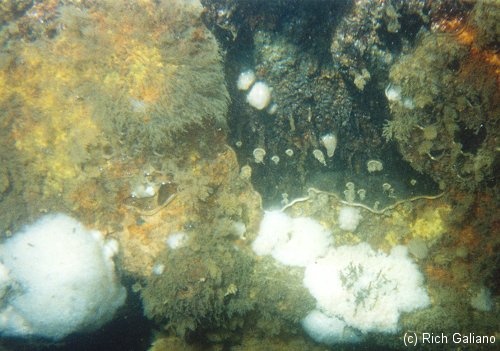

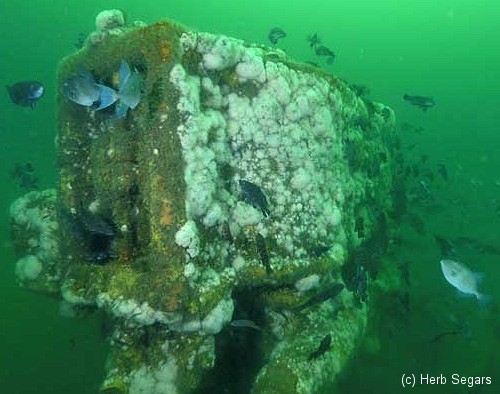
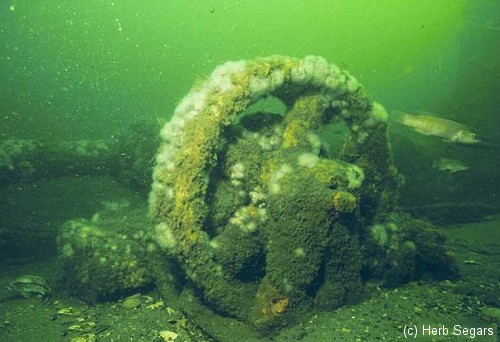

The Delaware is one of the few wrecks that can be found by land ranges. Note the locations of the two sets of water and bridge towers.
Clyde Lines apparently built a new Delaware to replace this one, since a New York pilot boat is listed as having been run down by such a vessel in 1912. Pilot boats were small sailing craft in those days, nothing like the Sandy Hook.
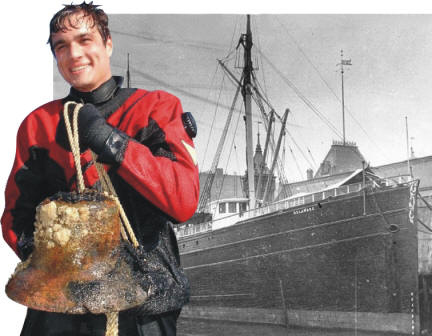
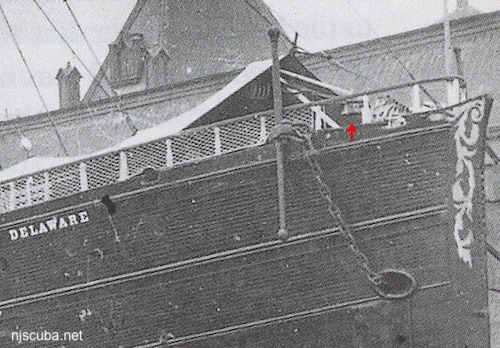
Side-scan sonar image, diagram, and comments courtesy of Capt. Steve Nagiewicz.


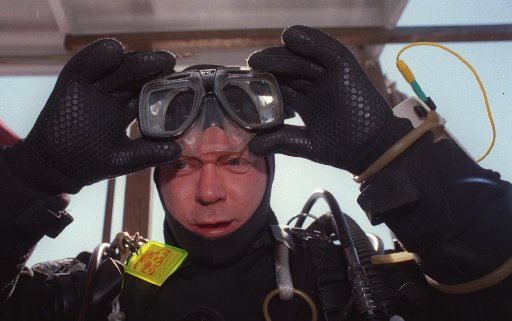
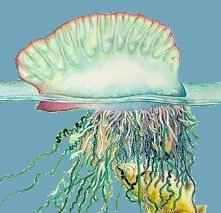
Questions or Inquiries?
Just want to say Hello? Sign the .